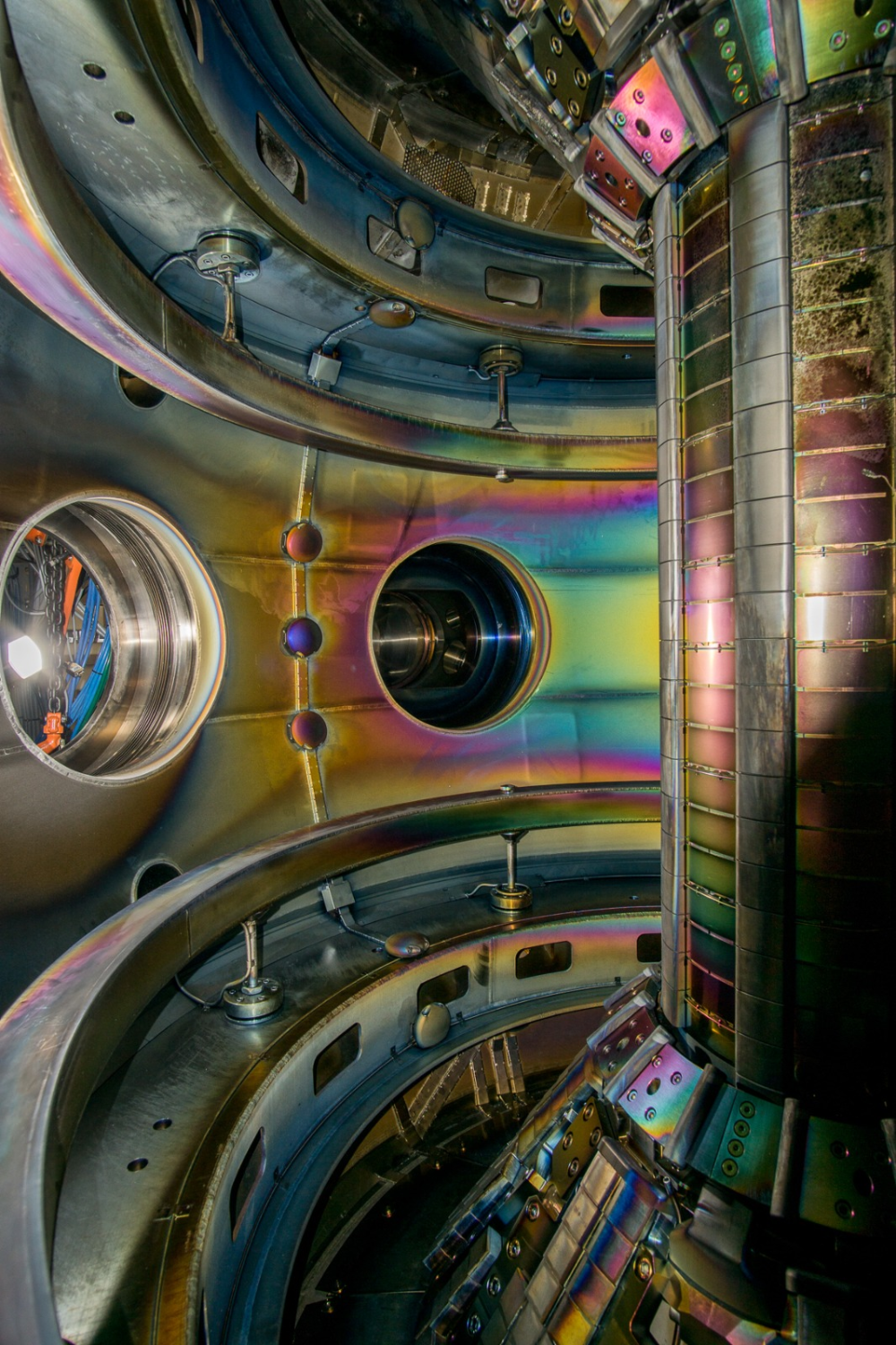Temperatures seven times hotter than the center of the Sun have been achieved in a nuclear reactor that’s less than a meter (3 feet) wide. Ions inside the spherical Tokamak ST40 soared to over 100 million degrees Celsius, breaking the record for this kind of reactor.
One hundred million degrees Celsius (around 180 million degrees Fahrenheit) had only previously been achieved in much larger reactors requiring a lot more power. It’s a momentous achievement as it demonstrates the right conditions for fusion can be created in more compact reactors like ST40, requiring less energy to run.
“While national laboratories have reported plasma temperatures above 100 [million] degrees in conventional tokamaks at least 15 times larger, Tokamak Energy’s milestone was achieved in five years in a compact spherical tokamak,” Stuart White at Tokamak Energy told IFLScience. “The optimal technical approach: Spherical tokamaks maximise fusion power with higher efficiency, [and] compared to conventional tokamaks, spherical tokamaks reduce [capital expenditures] and [operational expenditures].”
Generally speaking, it’s more challenging to achieve fusion in a smaller reactor compared to a bigger one. To understand why, let’s first do a quick recap on nuclear fusion.
Fusion occurs when two atoms combine, releasing enormous amounts of energy. This is because inside each atom is a nucleus that’s orbited by electrons and contains protons and neutrons. When you slam two atoms together with enough force, their nuclei combine, releasing vast amounts of energy.
It’s good because all it needs for fuel is hydrogen, the most abundant element in the universe, but it’s hard work because getting atoms to combine (forming helium) requires huge temperatures and pressure. Achieving these conditions inside a reactor usually requires a lot of kit and space, but here we have the ST40 achieving the work of reactors that need around 2.6 square kilometers (1 square mile) to operate in what sort of resembles a meter-wide metal egg.
“These results demonstrate for the first time that ion temperatures relevant for commercial magnetic confinement fusion can be obtained in a compact high-field ST and bode well for fusion power plants based on the high-field ST,” wrote the researchers behind the achievement.

ST40 sure is a beauty to boot.
Image courtesy of Tokamak Energy
While horror stories like the 1986 Chernobyl Disaster have left many feeling hesitant about nuclear energy, as a power source it’s arguably unbeatable when it comes to sustainability and environmental impact. With an ever-growing population seeking multiple devices, electric vehicles, and enough energy to keep it all going, large-scale power generation like that achieved through nuclear fusion is one of the greenest ways to get there.
This leap in fusion technology could one day pave the way for achieving nuclear energy that could meet the human population’s ever-growing energy demands.
“This important peer-reviewed result demonstrates for the first time that plasma temperatures relevant for commercial fusion energy can be obtained in a compact, high-field spherical tokamak,” Dr Steven McNamara, Tokamak Science Director at Tokamak Energy, said in a statement. “When combined with our world-leading magnet technology and as we scale up operations, it gives us great confidence that the more efficient and cost-effective spherical tokamak design represents the best route to achieving clean and globally deployable commercial fusion energy.”
So, here’s to you, tiny baby fusion reactor. ST40’s all grown up.
The study is published in Nuclear Fusion.
[H/T: Science Alert]
Source Link: Baby Fusion Reactor Less Than A Meter Wide Tops 100 Million°C